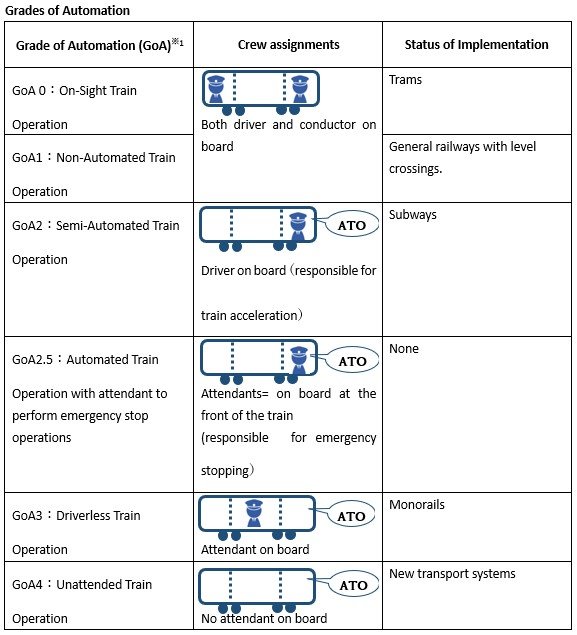As Japan’s population declines, it’s getting more and more difficult to recruit and train railway staff, such as drivers and maintenance workers. As a result, Japanese railway operators are working on introducing automatic train operation to both save labor and make their operations more efficient.
The introduction of automatic train operation will enable railway operators to meet increasingly diverse and sophisticated needs, such as the provision of services to passengers by crew members who traditionally only performed driving duties, improved on-board security through patrols by train crews, greater flexibility in the setting of timetables, and the temporary introduction of operations in the event of an emergency.
Based on the principle of Crash Avoidance, the Shinkansen is an energy-efficient, safe, and convenient transportation system. One critical characteristic of the Shinkansen is that it runs on dedicated tracks completely separated from other traffic, making it easier to promote automated operation.
Automatic train operation in Japan is divided into the following levels.

※1:GoAs are defined by JIS E 3802 (IEC 62267), Railway applications – Automated urban guided transport (AUGT) – Safety requirements, which deals with safety requirements applicable to automated urban guided transport systems with driverless or unattended self-propelled trains.
※ATO:Automatic Train Operation
Several JR companies, all of which are members of the IHRA, are working towards the implementation of automatic train operation, as follows.
East Japan Railway Company
- JR East plans to implement GoA4 level automatic train operation on out-of-service trains between Niigata Station and the Niigata Shinkansen Rolling Stock Center by the end of the 2020s. The company will also introduce GoA3 level automatic train operation between Tokyo and Niigata with an attendant on board to provide evacuation guidance by the mid-2030s.
- Based on the Hokuriku Shinkansen E7/W7 series, which operates between JR East and JR West territories, JR East is cooperating with JR West to develop automatic train operation systems and to reduce costs.
West Japan Railway Company
- Verification tests have been carried out at the Hokuriku Shinkansen’s Hakusan General Rolling Stock Depot site since 2022.
- Based on the Hokuriku Shinkansen E7/W7 series, which operates between JR West and JR East territories, JR West is cooperating with JR East to develop automatic train operation systems and to reduce costs.
Central Japan Railway Company
- Verification tests have been conducted on the Tokaido Shinkansen since 2021 with the aim of implementing automated speed control and stopping operations.
- JR Central plans to gradually introduce GoA2 level automatic operation on the Tokaido Shinkansen from 2028, which is expected to reduce the amount of work required by drivers and improve operational efficiency by enabling drivers to check platform safety and open and close doors, previously the responsibility of conductors.
As demographics in Japan continue to evolve and it becomes increasingly difficult to hire railway staff, the JR companies will continue to innovate in the area of automatic train operation so that the benefits of the Shinkansen can be maximized to support social and economic activities.
- https://www.mlit.go.jp/tetudo/tetudo_fr1_000058.html
https://www.jreast.co.jp/press/2023/20230509_ho02.pdf
https://www3.nhk.or.jp/tokai-news/20230511/3000029087.html